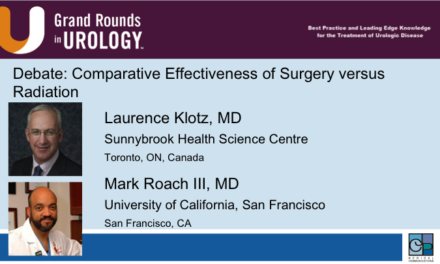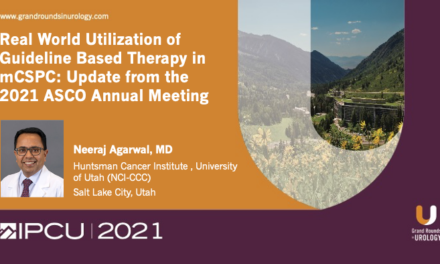Mark Emberton, MD, FRCS, presented “The Modern (Overlapping) Relationship Between Active Surveillance and Focal Therapy” during the 7th Global Summit on Precision Diagnosis and Treatment of Prostate Cancer on September 21, 2023.
This content is available free to the GRU Community. Login or create an account to view it.
How to cite: Emberton, Mark. “The Modern (Overlapping) Relationship Between Active Surveillance and Focal Therapy.” September 21, 2023. Accessed May 2024. https://grandroundsinurology.com/the-modern-overlapping-relationship-between-active-surveillance-and-focal-therapy/
The Modern (Overlapping) Relationship Between Active Surveillance and Focal Therapy – Summary
Mark Emberton, MD, FRCS, discusses the overlap between active surveillance and focal therapy in modern prostate cancer treatment. He begins by arguing that the proliferation of MRIs, which can accurately identify previously non-visible lesions, makes active surveillance unviable as a default treatment, emphasizing the survival rates of patients on active surveillance.
Dr. Emberton then presents an example case of a patient presenting with a lesion and the options physicians have for treatment. He compares the risks and benefits of treating the patient with focal therapy or monitoring the patient with active surveillance.
Dr. Emberton concludes by addressing the role of patient choice in prostate cancer treatment. He notes that informed patients tend to prefer therapy over surveillance, with little to no long-term regret about the decision. Patients opting for active surveillance over focal treatment tend to regret their decision not to treat the lesion earlier.
The Global Summit on Precision Diagnosis and Treatment of Prostate Cancer is a unique multi-disciplinary forum organized to inform the key health care stakeholders about the emerging advances in clinical case and research and create a consensus-based vision for the future of precision care and educational and research strategy for its realization. The mission of the Summit is to fill the currently existing gap between the key experts of in vivo imaging, the world authorities in the in vitro fluid- and tissue-based molecular diagnostics, including genomics, and thought leaders in the development of novel observation strategies (e.g., active surveillance, or AS) and therapeutic interventions.




